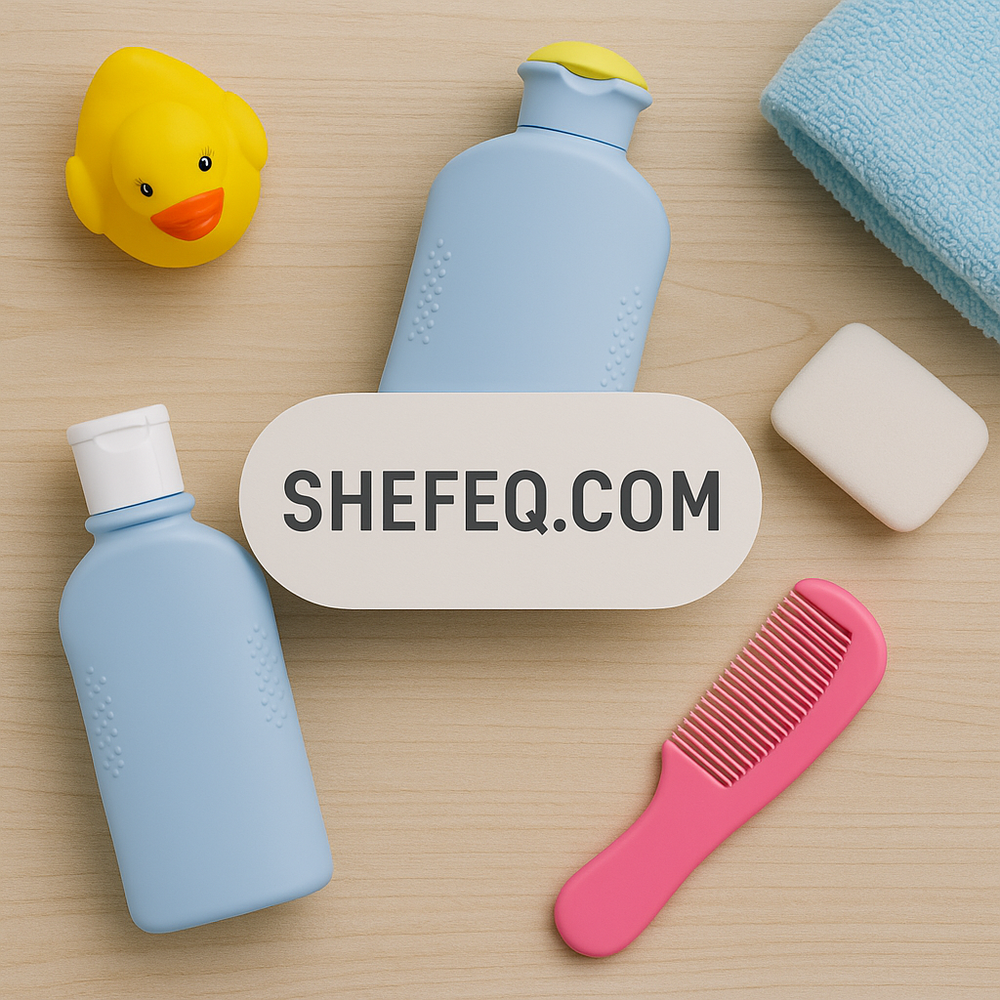As parents, when we look at the labels on shampoo bottles, we often come across chemical names whose effects we don't fully understand. What ingredients lie behind marketing terms like “natural ingredients,” “hypoallergenic,” or “for sensitive skin”? In this article, we will evaluate the chemicals used in baby shampoos, their effects, and alternatives from both scientific and practical perspectives.
I. BABY SKIN AND ITS VULNERABILITY
-
A baby’s skin is thinner and has a weaker lipid barrier, which makes it more prone to absorbing chemicals.
-
Shampoos used near the eyes can sometimes disrupt the tear drainage system.
-
Exposure to harmful substances in the first six months after birth can have long-term effects on the immune system.
II. MOST COMMONLY FOUND CHEMICALS
-
Sodium Lauryl Sulfate (SLS) and Sodium Laureth Sulfate (SLES)
-
Foaming agents
-
Cause skin and eye irritation, dryness, and discomfort
-
Increases risk of corneal damage when in contact with eyes
-
-
Parabens (methyl-, propyl-, butylparaben)
-
Used as preservatives
-
Banned in many countries in baby products due to hormone disruption
-
Research suggests they mimic estrogen
-
-
Formaldehyde and formaldehyde-releasing agents
-
Extend product shelf life (e.g., DMDM Hydantoin, Quaternium-15)
-
Can cause bleeding, skin burns, and respiratory irritation
-
Declared a potential carcinogen by the UN
-
-
Phthalates
-
Used to retain fragrance and give a soft texture
-
Linked to reduced sperm quality and endocrine disruption
-
Often hidden under the label “fragrance”
-
-
Fragrance / Parfum
-
Unclear whether natural or synthetic
-
Over 3,000 fragrance ingredients are often undisclosed
-
Among the top causes of allergic reactions
-
III. WHAT ARE THE RISKS?
-
Allergic reactions: redness, itching, skin peeling
-
Respiratory issues: inhaled scents can trigger bronchitis, asthma
-
Hormonal imbalance: early puberty, thyroid dysfunction
-
Eye damage: long-term use can lead to corneal dryness
-
Neurological impact: some preservatives may delay neural development
IV. ALTERNATIVES AND CERTIFICATIONS
-
Read labels and use detox apps (EWG, Yuka, Think Dirty)
-
Choose shampoos that are free from SLS, parabens, phthalates, and fragrances
-
Plant-based, soap-based shampoos (e.g., calendula, lavender, aloe vera)
-
Certifications: COSMOS, ECOCERT, USDA ORGANIC, OEKO-TEX cosmetic testing
V. GUIDELINES FOR PARENTS
-
Follow the “less but cleaner” principle
-
Shampooing 2–3 times a week is enough
-
Use natural eye rinses if shampoo gets into the eyes
-
Avoid heavily scented formulas for children under age 2
CONCLUSION
Baby shampoos are not just cleansing products — they can have long-term effects on the body, hormones, and nervous system. As parents, the first step to protecting our children is to read labels and prioritize natural ingredients.
QUESTION TO THE READER:
What do you pay attention to when choosing a shampoo for your child? Which ingredients do you avoid?
COMMENT SECTION:
Shefeq.com readers: Share your choices and inspire other parents!

